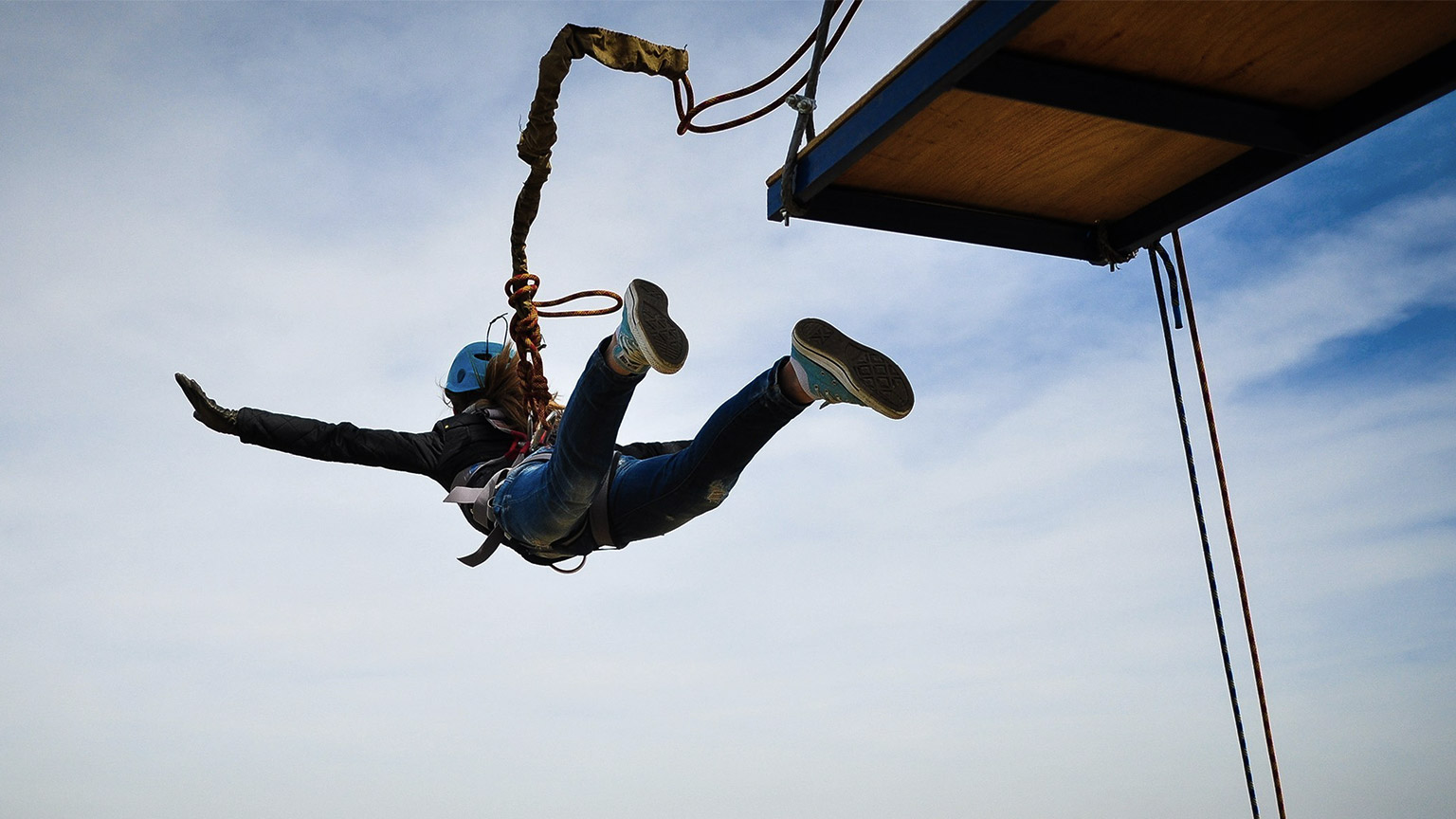We briefly covered this act earlier under the HR function of health and safety.
In New Zealand, 50 to 60 people are killed each year in workplace incidents, with hundreds of others dying as a result of work-related ill health. The statistic is even worse compared with Australia, as the number of incidents in New Zealand is nearly twice as high. The Health and Safety at Work Act 2015 (the Act) is the overarching law setting out fundamental principles and obligations of everyone in managing safety in the workplace.
The Health and Safety at Work Act is a key Act of Parliament that determines the framework by which all health and safety is managed in the workplace. The legislation covers both the obligations of employers and employees. The Health and Safety at Work Act 2015 (HSWA) is New Zealand’s workplace health and safety law.
It introduces new responsibilities for managing the work-related risks that could cause serious injury, illness, or even death. HSWA recognises that to improve our poor health and safety performance, we all need to work together. Government, businesses, and workers must establish better leadership, participation in, and accountability for people’s health and safety.
Everyone who goes to work should come home healthy and safe. To achieve this, HSWA provides a new way of thinking.
The Health and Safety at Work Act:
- Ensures everyone has a role to play
- It makes everyone’s responsibilities clear
- Focuses on managing work risk
- Requires those who create the risk to manage the risk
- Requires businesses to engage with workers and enable them to participate in health and safety actively
- Allows flexibility in managing health and safety risks.
The purpose of the Act is: The Health and Safety at Work Act's objective is to promote the prevention of harm to all persons at work and other persons in, or in the vicinity of, a place of work.
- HSWA recognises that a well-functioning health and safety system relies on participation, leadership, and accountability by government, business and workers.
- HSWA sets out the principles, duties and rights concerning workplace health and safety.
- A guiding principle of HSWA is that workers and others need to be given the highest level of protection from workplace health and safety risks, as is reasonable.
- We can't do this alone. Everyone needs to work together on health and safety.
EVERYONE IS RESPONSIBLE
Source: (https://www.worksafe.govt.nz/laws-and-regulations/acts/hswa/)
HSWA ensures that everyone has a role to play and makes everyone's responsibilities clear:
- Businesses are primarily responsible for the health and safety of their workers and any other workers they influence or direct. They are also responsible for the health and safety of people at risk from the work of their business.
- Company Leaders and Officers (company directors, partners, board members, and chief executives) must do due diligence to ensure the business understands and meets its health and safety responsibilities.
- Workers must take reasonable care for their health and safety and that their actions don't adversely affect the health and safety of others. They must also follow any reasonable health and safety instructions given to them by the business and cooperate with any reasonable business policy or procedure relating to health and safety in the workplace.
- Visitors and Customers, also have some health and safety duties to ensure that their actions don’t adversely affect the health and safety of others.
Learning Activity Forum: H&S Act at Work
Download and use this Quick Reference Guide to answer the following questions:
- What is a PCBU?
- Who has the primary duty of care, and what does it include?
- Who is an officer?
- In your own words, what is due diligence?
Upload your responses to these questions and post them to the Forum, H & S Act at Work.
What are the obligations of employers in workplace safety?
The Regulations of the Act aim to clarify what the legislative requirements look like in practice.
There are several regulations; however, it is best to have policies in place to address critical areas of concern, including:
- providing and maintaining a work environment free from health and safety risks
- ensuring safe plants and structures are in place and maintained
- providing safe systems of work
- ensuring plants, structures, and substances are handled safely
- providing clean, safe, and maintained facilities for the welfare of your employees
- training, instructing, and supervising employees to ensure safety is promoted in your business
- monitoring the condition of your employees to limit the risk of illness or injury in the workplace
- ensuring any accommodation is safe for employees.
What are the obligations of employees in workplace safety?
It is of little surprise that the best outcomes come from mutual effort, so employees should take reasonable care of their health and safety. This means your employees must ensure their actions do not cause harm to themselves or others, and they must comply with reasonable instructions, policies or procedures on the way they work to minimise risk.
Safety is a concern for everyone in the workplace, and regardless of the industry you are in there are risks in nearly every daily task. While there are requirements under the Health and Safety at Work Act 2015 for you to take the lead in managing safety, there are also obligations on employees that can be incorporated into your workplace policies.
Source: ( https://employsure.co.nz/guides/important-legislation/health-safety-work-act-2015/)
Various responsibilities of the people involved to ensure the Act is complied with.
BUSINESSES
- Businesses have the primary responsibility for the health and safety of their workers and any other workers they influence or direct. They are also responsible for the health and safety of people at risk from the work of their business
- The employer must provide employees with information about hazards. ensure employees have and use the right protective clothing and record and investigate any accidents or near misses.
COMPANY LEADERS AND OFFICERS (company directors, partners, and chief executives)
- Officers (company directors, partners, board members, chief executives) must do due diligence to make sure the business understands and is meeting its health and safety responsibilities.
WORKERS
- Workers must take reasonable care for their own health and safety and that their actions don't adversely affect the health and safety of others. They must also follow any reasonable health and safety instructions given to them by the business and cooperate with any reasonable business policy or procedure relating to health and safety in the workplace.
How can an employee make their workplace safer?
- Being involved in processes to improve H & S.
- Sticking to correct procedures and using the right equipment.
- Wearing protective clothing and equipment.
- Helping new employees understand the right safety practices.
- Communicate any safety concerns to the employer.
VISITORS AND CUSTOMERS
- Other people who come into the workplace, such as visitors or customers, also have some health and safety duties to ensure that their actions don’t adversely affect the health and safety of others.
Watch This Video
It is a Health and Safety at Work Act Presentation from Gordon MacDonald, the former CEO of WorkSafe NZ. (23:40)
The Impact of The Health and Safety at Work Act on Human Resource Practice
HRM practices need to include:
- identifying hazards with ‘others’ in the workplace
- isolating, minimising, and eliminating hazards
- implementing health, safety, and wellness strategies
- ensuring compliance with Health and Safety legalisation
- contributing to the development and maintenance of a positive organisational culture on H & S issues
- providing advice to management on H & S issues
- establishing channels of communication that allow staff contribution to H & S issues
Work Health and Safety Regulator
WorkSafe is the work health and safety regulator.
New Zealand’s work health and safety regulator is:
- WorkSafe New Zealand (WorkSafe)
- Other government agencies (called designated agencies) are designated to carry out health and safety regulatory functions for certain sectors.
WorkSafe carries out the work health and safety functions previously undertaken by the Ministry of Business, Innovation and Employment (MBIE) and, earlier, the Department of Labour (OSH).
Complete the following interactive exercise. WorkSafe's functions include:
In addition, other government agencies (called designated agencies) can be designated to carry out health and safety regulatory functions for certain work, for example:
- Maritime New Zealand for ships as workplaces and work aboard ships
- Civil Aviation Authority (CAA) for work preparing aircraft for imminent flight and aircraft in operation.
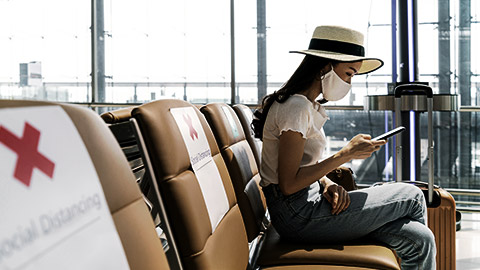
Behind the marketing brochures, behind the stunning scenery or entertaining tour, is a team of people that make the attraction/activity run smoothly and safely. You could be a part of this team one day. This portion will take you through some key areas of operations such as ‘health and safety’, and ‘management of risk’. To manage both these areas, tourism employers need to be familiar with several pieces of legislation and regulations, including:
- Health and Safety at Work Act 2015
- Health and Safety at Work Act (Adventure Activities) Regulations 2016 - Safety Audit Standard
We will investigate tourism operations that provide an attraction, tour, or activity. These are usually private enterprises run by New Zealanders showing the beauty and uniqueness New Zealand has to offer. Many bodies and organisations have been set up to ensure they do it safely by enforcing the rules and regulations above.
Health and safety in tourism is of paramount importance. When we think of tourism in New Zealand, it is often linked to adventure. These consist of many forms, from a gentle, easy-paced walk over beautiful countryside to extreme thrill-seeking activities, like jet boat rides, bungee jumping, etc.
The organisation/business is responsible for ensuring the activities are amazing but as safe as possible. HRM ensures the organisation/business has robust policies detailing who is responsible at what stage, how to manage and mitigate risks, and what procedures to follow in an emergency. The organisation’s size does not matter; from small to large, H&S is a top priority.
HR and Health and Safety
The HR department should also provide leadership and direction for ensuring a safe and healthy working environment for employees.
It is of great relevance for HR professionals to always have an in-depth understanding of how safe their workplaces are for guaranteed employee health. Most of HR professionals have aligned themselves with the normal traditional manpower management activities such as leave management, performance management, recruitment, training and development and forgot about the relevance of Occupational Health and Safety to the employment relationship.
Read the following article: "The Role of Human Resources in Promoting Workplace Safety and Well-being", by Asif Islam.
Learning Activity Forum: The Health and Safety Act
Answer the following questions.
- Under the HSAW, identify one responsibility a business owner has.
- Based on what you said in Q1 – what is the Role of the HR manager?
- Based on what you said in Q1 and 2, what responsibility does the employee have?
- What responsibility does a visitor to an attraction need to take?
Post your responses to the Forum, The Health and Safety Act.
Many attraction and activity providers operate in different areas of New Zealand.
These include:
- Hobbiton
- Waitomo Adventures
- Real Journeys
- Skyline
- AJ Hackett
- Te Puia
- Waimarino Kayak Adventures
- Whakarewarewa Thermal Village
- Kelly Tarltons
- Horse trekking
- Quad Bike Adventures
- Fox Glacier walk
(This is not an exhaustive list. Can you think of any more)?
There are also different types of environments and activities that employees and passengers are exposed to.
These include:
- water, land, air
- coach travel, travel on horseback
- travel in aircraft/helicopter
- rough terrain
- creeks and rivers
- farms/unstable tracks
- thermal areas
- walking
- riding
- alpine region/steep
- icy terrain.
There are also organisations and regulatory bodies that cover or safely manage the activities or environments mentioned above. These are:
- Department of Conservation (DOC)
- Department of Labour
- WORKSAFE NZ
- Maritime New Zealand
- Land Transport Agency
These organisations set standards that must be complied with. Apart from being told to by government departments, why else would you care about safety systems and risk at your tourism operation? What do you think hearing reports like this overseas do for New Zealand’s reputation?
Trigger Warning
Here is a list of articles and news reports about safety in New Zealand tourism. These depict grieving or angry parents and apologetic governments wanting to make the tourism industry safer.
| Article | Link |
|---|---|
| Fatal Article | https://bit.ly/348b0mz |
| This Australian radio report is a good summary of several accidents and what it does to NZ's image | https://ab.co/3hMjEiq |
| WorkSafe steps up checks on adventure tourism post-Whakaari (2020) | https://bit.ly/3fD9UVf |
| AdventureMark - Reflecting on 2020 | https://bit.ly/34aNR2Y |
| Targeted review of the adventure activities regime by MBIE (2021) | https://bit.ly/3bQzS6B |
| Making Dangerous Tourism Safe Enough (2020) | https://bit.ly/3uc7PEL |
Many risks are common to all businesses, but there are some that tourism businesses should pay particular attention to.
These are:
- visitor safety
- visitor numbers from one source declining
- international disruption to tourism
- new competitors
- fuel prices.
There are often more visitors onsite than employees. Often a higher percentage of visitors participate in riskier activities than the employees. Often a tourism employer will not know anything about their visitors as they are international, perhaps only visiting once with a language barrier compounding risk. These parameters are specific to a tourism business instead of an office-based workplace or retail establishment.
There are guidelines around visitors at work (could be a visitor to a tourist attraction/activity)
Visitors at work and those responsible for visitors have duties under the Health and Safety at Work Act 2015 (HSWA).
This position sets out what we expect of:
- a person conducting a business or undertaking (PCBU) and workers when other people visit their place of work
- visitors at a place of work
What does the law require when visitors are at work?
PCBUs and workers must make sure that the health and safety of visitors is not at risk from their work.
What you do depends on how much influence and control PCBUs, workers and people visiting a place of work have over what has created the risk.
While a PCBU has the primary duty of care, visitors at a place of work must help to achieve health and safety. Everyone must keep in mind potential risks at work and take care that their actions don’t put them or anyone else in harm’s way.
Focus for Visitors
Visitors and other people at the workplace must take reasonable care for their own health and safety. They must make sure that their action or inaction does not adversely affect the health and safety of others. They must also follow any reasonable instruction from the PCBU.
A Safety Management Plan can be beneficial. The Safety Management Plan defines the mechanisms for interaction and oversight for the six primary functions involved with the Management of the Environment of Care. These functions include safety, security, hazardous materials and wastes, fire/life safety, medical equipment, and utilities management. Examples of safety management procedures for preventing otherwise preventable accidents include systems to ensure walkways are clear of obstructions at all times, properly guarding any machine parts that move or rotate, properly and adequately securing heavy or suspended machinery, and providing workers with adequate safety gear and protective clothing.
Source: (https://smallbusiness.chron.com/examples-safety-management-4882.html)
Risk Management
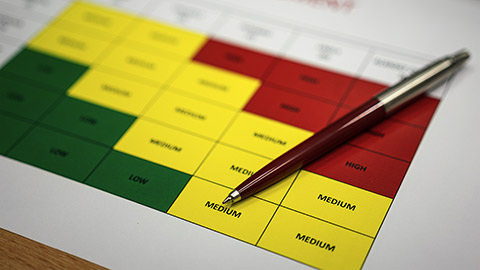
Tourism businesses must adhere to many regulations, including the Health and Safety at Work Act 2015. One of the areas of this Act suggests employers must identify hazards and ensure those hazards are eliminated, isolated, or minimised.
To keep a workplace safe and healthy, employers should ensure there are no hazards to which employees and others could be exposed. Employers should look for hazards in advance, as part of their risk management and work planning, to anticipate and prevent potential hazards. In all of this, employers should benefit from their employees' knowledge by talking to them and/or their representatives (including unions) in good faith about the best way to do things.
Employers must implement an effective system for identifying existing and emerging (new) hazards.
Methods of hazard identification include:
- physical inspections of the workplace, equipment, and work practices
- analysis of tasks and how employees in the workplace carry them out
- analysis of processes carried out in the workplace
- analysis of previous 'near-miss incidents’.
What is a "Hazard"?
The concept of a hazard is pivotal to the working of the Act. A hazard is any actual or potential cause of harm.
It may occur inside or outside of a place of work.
It may be a(n):
- activity
- occurrence
- arrangement
- phenomenon
- circumstance
- process
- event or situation.
It includes a situation where a person's behaviour may be an actual or potential cause or source of harm to the person or another.
What to Look at When Identifying Hazards:
Think about your workplace, your wider work environment (outside your immediate physical environment), and work processes when considering the health and safety of workers or others.
Consider if you have at-risk workers (e.g. young people, pregnant women, or workers with impaired mobility) or if your work can affect at-risk people beyond your immediate workplace.
Look at the following areas:
- Physical (eg noise, vibration)
- Biological (e.g. bacterial infections)
- Chemical (e.g. asbestos, lead)
- Ergonomic (e.g. manual handling)
- Psychosocial (including bullying, tight deadlines, and other stress factors).
Also, consider the following:
- Work processes (e.g. what harmful substance you use or could be generated), plants, (eg vehicles, machinery, equipment) and structures (e.g. buildings)
- Business as usual - during different shifts - during the cleaning, repair, or maintenance of machines - during the clearing of jammed machines - for ‘non-business as usual’ events such as shutdowns
- The workplace itself (e.g. lighting, ventilation)
- Your wider work environment (outside your immediate workplace) – any emergencies or unexpected events that have occurred
- Worker behaviour including possible intentional misuse of equipment.
Seek the views of your workers and their representatives when identifying hazards. Your workers will have operational day-to-day knowledge that will be invaluable when identifying hazards.
Download this following PDF document: "Identifying, Assessing and Managing Work Risks". In particular, the table on p.15 of the resource is useful. The following image is indicative of the table.
Click here to open the image in a new tab.
What is a "Significant Hazard"?
A significant hazard may cause:
- serious harm (an important concept, defined in Schedule 1 of the Act and reproduced in the Definitions section at the back of this guide). This includes death and many occupational illnesses and injuries that may be sustained in a place of work; or
- immediate harm - the severity of which may depend on how often or how long a person is exposed to the hazard - such as occupational overuse syndrome; or
- post-exposure harm that cannot be detected until a significant time after exposure. This includes long-latency diseases caused by exposure to hazardous substances - such as asbestosis, neurotoxicity, emphysema, and other diseases of occupation.
Employers should also have an effective system for responding to and managing the identified hazards. How the employer responds to and manages a particular hazard will depend on the circumstances. The preferred response is to eliminate the hazard; that is, change things so the hazard no longer exists.
If this can't reasonably be done, the next response should be to isolate the hazard; that is, put in place a process or mechanism that keeps employees away from the hazard. If this can't reasonably be done, then the hazard must be minimised; that is, do what can reasonably be done to lessen the likelihood of harm being caused by the hazard and to protect employees.
This might include:
- providing employees with suitable protective clothing or equipment
- monitoring employees' exposure to the hazard
- monitoring employees' health about the hazard with their informed consent.
Identifying Hazards
This requires employers to have effective methods to identify hazards to employees at work systematically.
Hazards may be:
- previously existing
- new or
- potential.
Having identified the hazards, employers must determine which are significant and require further action. When an accident or serious harm occurs, an employer (and a self-employed person or principal) must notify the Occupational Safety and Health Service in the prescribed form.). The employer must also take all practicable steps to investigate whether a significant hazard caused it.
Learning Activity Forum: Identify the Hazard
Trigger Warning
Download the Word document here to complete this task.
Review each image. Using your knowledge so far, determine whether it is a “significant” hazard preventable in terms of: eliminate, isolate or minimise and why.
Post your responses to the Forum, Identify the Hazard.
Tourism Operators
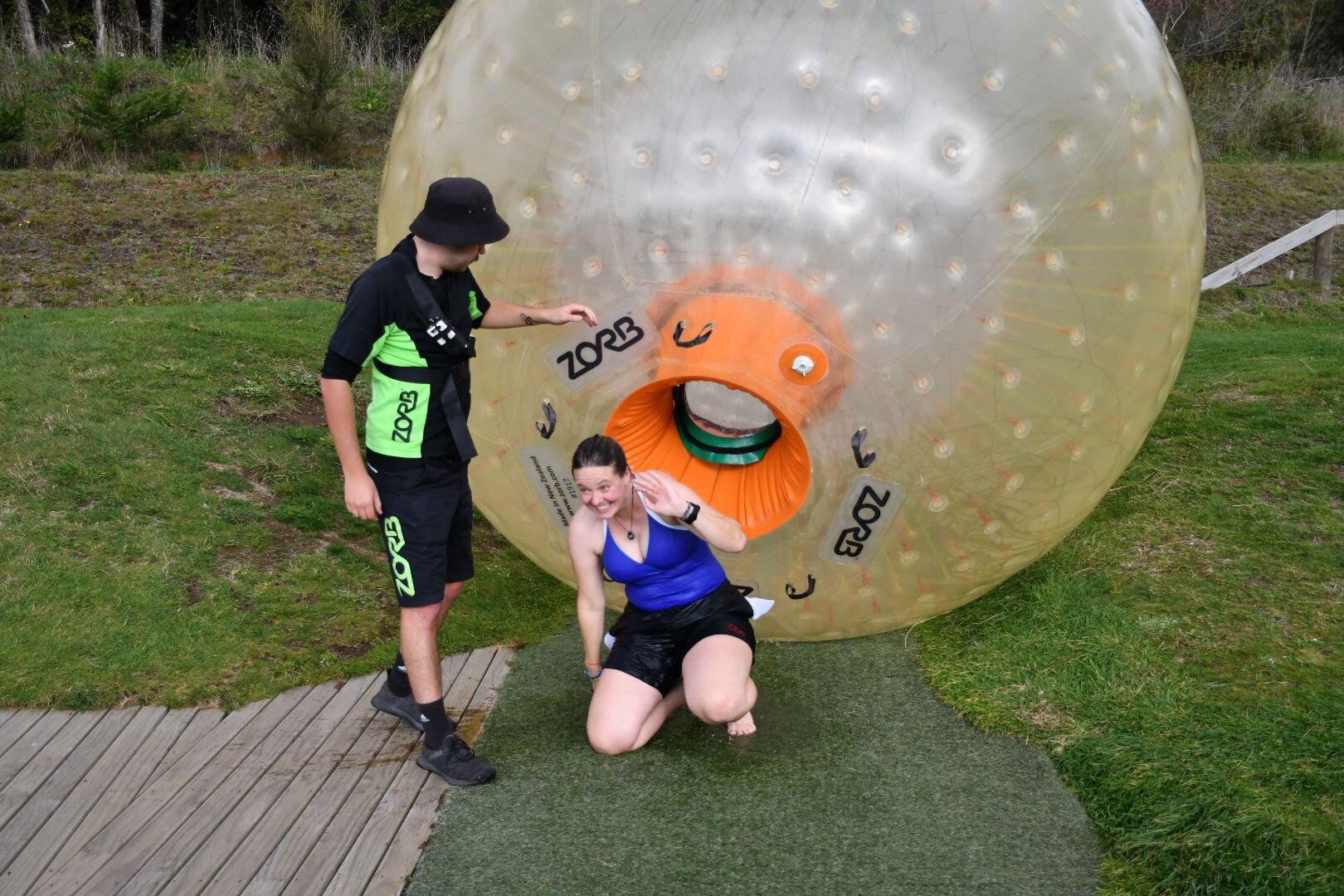
You can learn some unique and jaw-dropping facts about leading tourist attractions in New Zealand. As part of any operator’s safety management plan, they would need to consider the safety of their passengers. Many of these operators offer information about the safety of their attractions on their websites.
Case Study: Skyline Queenstown - Safety on the Luge
Watch the following video on Skyline Queenstown.
There are safety guidelines to follow on the Luge.
- All Luge riders receive a full safety briefing from our trained instructors before their first Luge and must ride the Scenic Track first to demonstrate their competence before riding the Advanced Track.
- The Luge Code of Conduct and instruction video are displayed at the chairlift’s top before the start zone. (Please note that age/height restrictions apply for children to ride the Luge solo).
The Luge Code of Conduct sets out the rules that help make the Luge a safe and enjoyable experience for everyone.
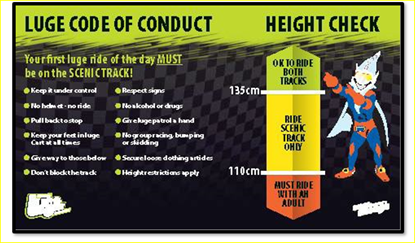
Download the complete guidelines for the Luge as a PDF document here.
Learning Activity Forum: Skyline Queenstown
Read the case study and familiarise yourself with the Skyline Queenstown Luge Code of Conduct.
Imagine if passengers did not obey these instructions or the operator did not make them aware.
- What would happen?
- What would be the implications for future bookings?
- What would be the implications for New Zealand tourism as a whole?
Post and share your responses with fellow online students in the Forum, Skyline Queenstown.
Case Study:
Hackett Bungy New Zealand - "We invented safe".
Check out the safety video by the Jump Operations Team at AJ Hackett
AJ Hackett Bungy has Jumped and Swung over 1 million people in over 26 years of business.
Read the safety details of the Key Safety Processes and Procedures, Code of Practice, Code of Compliance, Training, Medical Considerations, and Onsite Safety in more depth.
The table below is an excellent example of a risk register template. You can download a PDF copy of it here.
Here is a completed Hazard Register for AJ Hackett Bungy (AJHB), committed to providing a safe environment for members of the public and its staff to undertake and enjoy the thrills of Bungy Jumping and related products. They state that:
- Facilities and equipment shall be maintained to the highest standard to protect jumpers and crew.
- The health and safety of staff is fundamental to our philosophy of excellence and professionalism in providing Bungy Jumping services to the public.
- AJ Hackett Bungy NZ is committed to carrying out the methods and achieving the standards contained in AS/NZS 5848:2000 (the Code of Practice for Bungy Jumping). All sites are staffed with trained crews to ensure compliance with the policy and procedures.
- Risk management controls are documented in Standard Operating Procedures (SOPs), Site and Task Training Manuals, Emergency Response Plan (ERP), Health and Safety Manuals, and Amusement Device Licences (ADL).
| Site | Part of Site | Hazard | Action Req. | Responsibility |
|---|---|---|---|---|
| All sites | General | Fire |
Dial 111 Evacuate the building if required as per the Evacuation Plan. Extinguishers are available at all sites and vehicles. |
Site Controller |
| All sites | General | Slip Hazard-Icy/Slippery Pathways and Steps |
Good housekeeping. All pathways and steps are to be cleared of debris, leaves, and stones. Salt is kept on site to melt ice. |
Site Controller |
| All sites | General | Power Failure | Evacuate the building if required as per the Evacuation Plan. | Site Controller |
| All sites | General | Operating in Low Light/Dark, Night Jumps/ Functions | Operate by AS/NZS 5848 and SOP Manual. | Site Controller |
| All sites | General | Contractors, Sub-Contractors, and Visitors | Complete a Contractor Agreement and Site Induction and comply with Health and Safety regulations. | Site Controller/Business Unit Manager |
| All sites | General | Extremes of Temperature |
Customers and Crew to be adequately clothed. Operate by AS/NZS 5848 and SOP Manual. |
Site Controller and Jump Controller |
| All sites | General | Site Access-Private Roads | Approved assessment only. All customers access via AJHB transport or approved provider by the safe driving policy. | All Crew |
| All sites | General | Exposure to Moving Parts |
Restricted access procedures. All operational areas have controlled access. |
All Crew |
| All sites | General | Crew Fatigue | The crew takes regular breaks by Jump Operations Manual, AS/NZS 5848, and ADL. | All Crew |
| All sites | Jump and Swing Decks and Operational Areas | Exposure to Height/Fall |
Only registered customers and crew are permitted in operational areas. Operations are run by Jump Operations Manual, AS/NZS 5848, and ADL. |
All Crew |
| All sites | Walkways and Viewing Areas | Exposure to Height/Fall | Walkways and viewing areas are fenced, managed, and maintained by SOPs, AS/NZS 5848, and ADL. | All Crew |
| All sites | Jump and Swing Decks and Operational Areas | Equipment Failure | All equipment is sourced, managed, and maintained by the Jump Operations Manual and AS/NZS 5848. | All Crew |
| All sites | Jump and Swing Decks and Operational Areas | Jump Styles/Water Entries |
All jumpers are vetted and instructed per the Jump Operations Manual and AS/NZS 5848. All clients are given instructions on the dive required, as per the Training and Operations Manual Water entry instructions are given as required. |
Jump Crew |
How to Manage Work Risks
Different businesses will have different health and safety risks. It all depends on the type of work you do.
Healthy and safe work starts with identifying and understanding what your work-related health and safety risks are. It then involves doing what is reasonable and practicable to eliminate those risks. Where the risk cannot be eliminated, it must be minimised so far as is reasonably practicable. Always ask workers for input on identifying health and safety risks, and when choosing solutions. People are more likely to take responsibility and make good choices if they’ve been involved in the conversation. Workers are the eyes and ears of your business. They could suggest practical, cost-effective solutions.
Worksafe recommends using a “plan-do-check-act" 4-step plan. Learn more about managing work risks here. Page Two (2) is of particular significance. An abridged infographic of this is detailed below.
Now look at the example of a hazard register for Black Water Rafting.
| Hazard Identified | Significant Y or N |
Eliminated/Isolated or Minimised (E, I, or M) |
Action Required |
|---|---|---|---|
| Poor cave match for the group | No | E |
|
| Overseas driver causing accident | No | M |
|
| Injury from equipment failure | Yes | M |
|
| Party member lost | No | M |
|
Learning Activity Forum: Sample Hazard Identified from Various Tourism Operators
Now you know what a hazard register looks like, use the following table for this activity, and fill in the two blank columns for some practice. Download your table here that you can use to complete the exercise in your forum.
| Hazard Identified | Is it Significant? Y or N |
Can it be Eliminated, Isolated or Minimised (E, I or M) |
Action Required to Mitigate Risk (Depending on E, I or M) |
|---|---|---|---|
| Visitors tripping or slipping on steps/icy decks/ride brakes. | Close ride if conditions are too wet. Sharp edges are marked or removed. Stairs are kept clean and grip/tread is used in walkways. Mark trip hazards. |
||
| Customers not informing staff of previous injuries or accurate fitness levels. | Passengers are to sign a waiver to reveal previous injury information. | ||
| Riders feeling faint/claustrophobic. | All staff are to be first aid trained. | ||
| Visitors entering danger/staff-only zones. | Use physical barriers as well as signage to warn passengers. Consider other languages and visual imagery on signage to make more universally understood. | ||
| Heavy rain reduces visibility. Poor weather reduces enjoyment and safety on board a vessel. |
Close ride if conditions are too bad. | ||
| Visitors not following instructions. | Carefully explain all aspects of the operation and ensure comprehension Verbal AND practical demonstration of instructions. Customer to repeat. |
||
| Grabbing the driver’s/guide’s arm. | Seat most confident visitor near guide. | ||
| Disorientation and stumbling down the final ramp. | Anticipate jelly legs after the ride and guide visitors back to the lobby. | ||
| Visitors trapped in cave squeeze. | Protect clients if exposed to areas of high risk. Visitors are to sign waivers about physical fitness before activity. Guides fully trained to deal with first aid and emergencies. Avoid loose clothing, baggage and jewellery in the cave. |
||
| Distress to animals. | Include instructions about visitor behaviour and animal care code. Visitors are to be briefed on animal behaviour. |
||
| Injury to visitors from dangerous terrain or tracks or animal attack. | Marked tracks and walkways. Guides to watch animal behaviour. |
||
| Fatigue/ snow blindness. | Adequate food and fluid intake monitored for passengers and crew. Check the weather forecast and snow report. All staff First Aid trained. All participants are to use sunblock and protective eyewear. |
||
| Severe cold/ hypothermia. | Check the weather forecast and snow report. All staff First Aid trained. |
||
| Unsafe terrain/avalanche risk. | Check the weather forecast and snow report. Sign and cordon areas of danger or instability. |
||
| Groups split off /wander into unsafe areas or miss safety briefings. | Active management of group safety during activity. |
Post your completed table to the Forum, Sample Hazards.
The website 100% Pure New Zealand contains great information and FAQs on H & S requirements in tourism.

New Zealand has some of the most exciting adventure activities in some of the most spectacular locations in the world. Many of these adventure activities are offered to international and domestic visitors by commercial operators.
Explore the following "Must Do Top 10 Adventure Experiences" in New Zealand. Click on each heading to explore more.
Source: ( https://www.newzealand.com/int/)
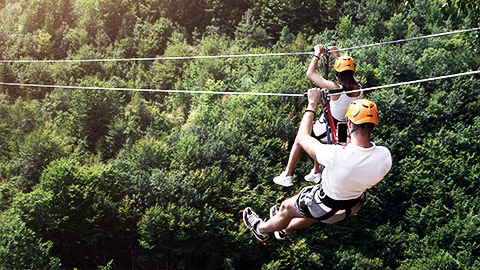
Zip your way past stunning harbour views on Waiheke Island, enjoy an immersive wilderness experience through the treetops in Rotorua, or fly through the air in the lush rainforest canopy on the West Coast tree tops. Gaze at the Remarkables mountain range in Queenstown, or combine zip lining with river tubing and glow worms on the West Coast. It’s the perfect combination of adrenalin, nature and speed.
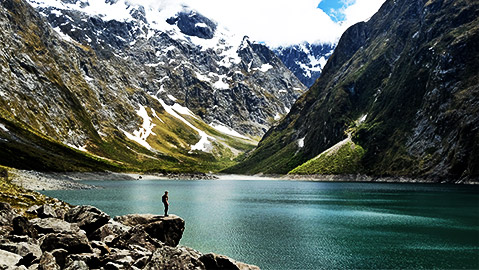
Leap off waterfalls, slide down rocks, scramble, climb, jump, abseil… Canyoning is among New Zealand’s wildest adventures and is staged in remote mountain locations around Auckland, Coromandel, Nelson, Canterbury, and Wanaka.
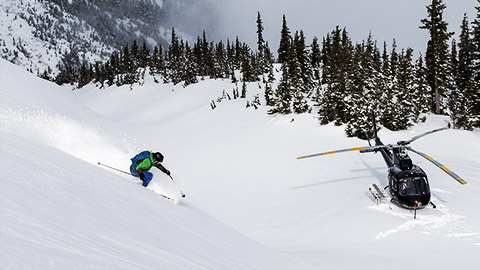
Heli-skiing is for adventurers who are seeking pure adrenaline and freedom in fresh powder snow. Take a scenic flight to the top of the mountain, and make your own downhill tracks as you ski your way back down on the ultimate guided heli-ski adventure.
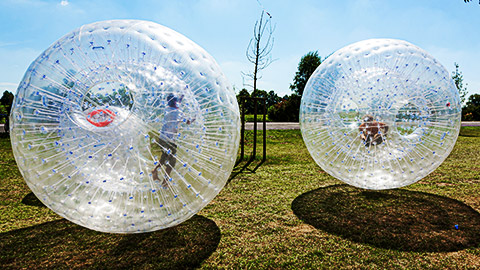
Get inside a big plastic ball (orb) and roll down a hill, with or without water. Among Rotorua’s mix of adventure activities is the Zorb. This iconic activity is a must-do if you’re in the region enjoying its renowned geothermal wonders.

Take a leap of faith on a bungy at the original Kawarau Bungy site(opens in new window), or New Zealand's highest at the top of the Nevis (both in Queenstown). Or for a completely different style of bungy, why not try the Auckland Harbour Bridge or Taupo Bungy on the Waikato River. As the home of bungy, New Zealand doesn’t disappoint!

Buckle up, hold tight and head out on a scenic wilderness off-road adventure on one of New Zealand’s comprehensive network of back-country roads and tracks. Or why not try your luck on the colossal sand dunes of the popular Ninety Mile Beach in Northland.
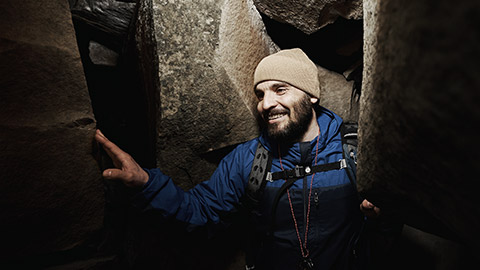
Featuring some of the most challenging and spectacular caving systems in the world, New Zealand is top of the list for spelunkers (cavers). Walk or float (black-water rafting as it is referred to) through the spectacular Waitomo Caves or enjoy guided underground adventures in Nelson (home to the southern hemisphere’s deepest sinkhole).
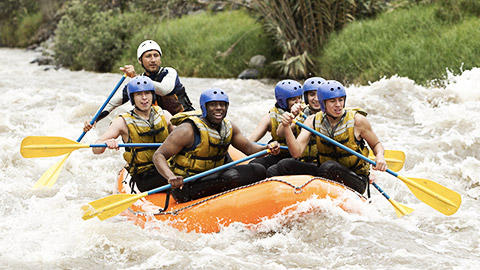
From the highest commercially rafted waterfall in the world (7m) in Rotorua to rivers where rapids range from a gentle grade 1 to an extreme grade 5, New Zealand has it all. Tongariro River in Lake Taupō, the wild West Coast and Queenstown are among the popular rafting spots in the country.

Feel the power of the water as you jet-boat a spectacular river close to Lake Taupo's thundering Huka Falls, or negotiate 360-degree spins on one of Queenstown’s spectacular rivers.

Embrace the excitement and soak in the views as you tandem skydive or go solo – a true heart-stopping adventure! You can skydive in various locations around New Zealand, including Wanaka, Queenstown, Lake Taupo, Auckland, and the Bay of Plenty.
Risk of Harm
All adventure activities involve an inherent risk of harm. The degree of risk varies among activities and locations. Adventure activity operators must take all practicable steps to manage the risks and deliver adventure activities safely while keeping alive the sense of adventure and excitement. To protect the health and safety of staff and participants engaged in adventure activities, and to protect New Zealand’s reputation as a world-leading provider of adventure activities, the Government introduced regulations in 2011 to ensure operators have sound safety management systems in place.
We have already learned about the Health and Safety at Work Act 2015 and what all tourism businesses must adhere to. However, Adventure operators now must adhere to extra rules and regulations as set out by the:
Health and Safety at Work (Adventure Activities) Regulations 2016. The core requirement of the Regulations is that all adventure activity operators must pass a safety audit every three years and register their operation with WorkSafe. These audit requirements provide a proactive check that operators are meeting their obligations and have effective safety management systems in place. These regulations are made under sections 211 and 218 of the Health and Safety at Work Act 2015:
- These regulations require all adventure tourism and outdoor education operators who provide activities designed to deliberately expose participants to a risk of serious harm to undergo a safety audit by a recognised auditor and be registered. This will ensure operators can’t start up or continue operating with inadequate safety systems.
- The regulations do not apply to organisations that don’t charge fees – such as schools or voluntary clubs, nor do they apply to operators who provide not taught or guided activities.
In 2023, these regulations have been amended to:
- Introduce a new duty for adventure activity operators to take all reasonable steps to inform persons seeking to participate in adventure activities of any serious risks they may be exposed to and a corresponding offence.
- Expand the registrar’s powers to decline, suspend, cancel, and add conditions to adventure activity operator registrations, where justified on safety grounds, and provide operators with rights to appeal and request reviews of decisions where these powers are exercised.
- Establish a new registration process that requires adventure activity operators to register directly with the Registrar (rather than indirectly via their safety auditor) and provide more detailed information upon registration.
- Introduce sector-specific notifiable incidents, requiring adventure activity operators to report near-misses from key risks in the sector to WorkSafe.
- Note that the amendments to the Regulations will come into force on 1 April 2024.
The regulations cover many paid adventure activities, although activities run by sports clubs and schools are excluded from the regulations in most circumstances, as are events run by sports clubs or recreation clubs or associations representing sports clubs or recreation clubs for competition. They also do not apply to operators who provide activities that are not taught or guided.
The regulations require commercial operators who provide adventure activities, as defined by the regulations, to pass safety audits and become registered by WorkSafe New Zealand (WorkSafe). Passing a safety audit is required for registration. WorkSafe must develop and continue to review safety audit standards specifying the requirements that adventure activity operators must comply with to reduce risks when providing adventure activities. Safety audit standards must include requirements to manage the risks of drug and alcohol use by operators and their staff. WorkSafe may publish a safety audit standard, or a change to a safety audit standard, by notice in the New Zealand Gazette. Safety audits are performed by safety auditors recognised by WorkSafe. Safety auditors are engaged directly by operators. A safety auditor must audit an operator for compliance with the safety audit standard that applies to the adventure activities provided by the operator. If the operator passes the safety audit, the auditor must issue a safety audit certificate to the operator that specifies the adventure activities that were audited. Safety audit certificates are valid for a period specified by the auditor up to a maximum of three years. Renewal is required on or before the expiry date. An auditor may issue a certificate subject to any conditions the auditor considers are required to maintain the safety of the activities, as consistent with the safety audit standard.
You have already looked at WorkSafe NZ earlier. It is a mine of information in easy-to-read, understandable, and accessible formats. Read what they have to say about adventure activities.
Now look at this Decision Tree by WorkSafe New Zealand. This overview shows where an activity sits in Health and Safety actions and the WorkSafe Activity Policy. Download the Worksafe Enforcement Decision-making Model here. The Decision Tree is on page 4.
There is also a wealth of WorkSafe documents and resources that you can access.
Learning Activity Forum: WorkSafe- NZST Tour Company
- After reading Worksafe adventure activities, write a summary of how this impacts tourism in NZ.
- List three activities and processes you may need to follow to ensure your activity is as safe as is reasonably practical.
- After reading Worksafe documents and resources, how will these regulations affect your operations of the NZST Tour Company? What will you do to ensure you meet all your H&S requirements?
Post your responses to the Forum, Worksafe-NZST Tour Company.
Tourism New Zealand and the Regulations

Tourism New Zealand is a supporter of regulations. TNZ offers advice only. It is the operators’ responsibility to be registered. TNZ will review legal terms and conditions around the list above and add that adventure operators must be registered. If Tourism New Zealand doesn’t feel that an operator is correct in not requiring coverage, they will question it.
The impact on Tourism New Zealand (TNZ) is significant. Consider the operators involved in their many projects, such as:
- Media team promoting them on famils
- Trade team promoting them on famils
- www.newzealand.com
- Campaign work
- Digital assets such as image library, broadcast media library
- Qualmark association
- I-SITEs associations
Key international media, journalists, opinion leaders, and celebrities get invited to travel to New Zealand, and operators donate their services. They then write about NZ or have media footage of them broadcast overseas. International travel agents and inbound operators are invited on famils, to promote and sell our operators offshore.
Support Adventure NZ
The government set up the Support Adventure website to support adventure operators. Here they can find the tools, resources, and information to help manage risk in their adventure business.
| Good Practice | Tools and Templates | COVID-19 Operating Guidelines |
|---|---|---|
| Good practice information for managing specific activities and risks | Tools and templates to help you develop your safety management system | RedChange - Updated 27 January 22 |
Adventure tourism operators can find out what the process is for becoming a registered “Adventure Activity Operator”. It is an offence for unregistered operators to offer adventure activities to participants/customers.
Learning Activity Forum: Who is Registered?
Find 5 registered tourism operators in NZ and complete the table in your Forum: here is an example of what to put in your own table.
| Full Legal Name | Trading Name | Activities Provided | Location of Activities | Registration Status |
|---|---|---|---|---|
| South Island Tours NZ Ltd | South Island Tours NZ | Off-road vehicle driving | South Island | Current from 10/04/21 until 09/04/2024 |
Download a copy of the table in a Word document here.
Post your table to the Forum, Who Is Registered?
Safety Audit
The operator must establish document, implement, maintain, and continually improve the safety management system (SMS) in accordance with the requirements of this standard and must determine how they will fulfil these requirements.
The SMS must include an overarching safety management policy. The policy must express the operator’s commitment to compliance with Health and safety legislation, prevention of serious harm, and continual improvement. The policy must state who is responsible for the SMS.
The operator should have a document or statement summarising the components of their SMS and how they relate to each other.
Operators must undergo safety audits in order to be registered under the Adventure Activities Regulation. Operators can learn more via this PDF download.
Safety audits are performed by safety auditors recognised by WorkSafe. Safety auditors are engaged directly by operators. A safety auditor must audit an operator for compliance with the safety audit standard that applies to the adventure activities provided by the operator.
If the operator passes the safety audit, the auditor must issue a safety audit certificate to the operator that specifies the adventure activities that were audited. Safety audit certificates are valid for a period specified by the auditor up to a maximum of three years. Renewal is required on or before the expiry date. An auditor may issue a certificate subject to any conditions the auditor considers are required to maintain the safety of the activities, as consistent with the safety audit standard.
TIA - Tourism Industry Aotearoa
The TIA provides leadership and support to help strengthen safety across the important adventure tourism and outdoor sector.
TIA played an important role in shaping the Adventure Activities Regulations, introduced by the Government in 2014 to strengthen safety across the sector. We continue to advocate for WorkSafe New Zealand and audit providers to ensure the audit and regulatory regime adds value to operators and their safety systems.
New Zealand now has the best adventure tourism offering in the world, with the strongest safety management systems in place. TIA’s position.
In 2010, adventure tourism operators agreed on eight industry safety principles that underpin safety in the adventure activity sector.
These principles continue to provide the foundation for TIA’s advocacy position for the sector:
- Operators have a positive safety culture driven by committed leaders.
- Operators have a safety management system (SMS) relevant to their operation.
- Operators have an external assessment before commencing operations.
- Operations have ongoing external assessments.
- Operators have competent staff.
- Operators communicate risks and responsibilities.
- Operators have well-maintained equipment that is fit for purpose.
- Operators share safety information.
You can visit TIA (Tourism Industry Aotearoa) to access the Workforce and Employer Health and Safety Toolkit.
The TIA ran webinars and workshops to advise operators about the introduction of the new regulations. One of their posts is shown below.
Risk and Safety Management
TIA has developed a short pre-season checklist that operators may want to refer to when updating and reviewing their plans. TIA is aware that operators are professional risk managers in their own right, but the association remains committed to providing advice and support.
Other Acts Specific to the Nature of the Activity
Click on each dialogue card to read more about acts and regulations associated with activities in New Zealand.
Caving
Commercial caving in New Zealand occurs both in outdoor education centres and adventure tourism operations. The majority of commercial caving, and certainly the more technically difficult trips, occur with adventure tourism operations. New Zealand cave tourism began with the Waitomo glow worm cave in the 1800s. The modern adventure tourism caving sector started in the late 1980s, corresponding with the broader New Zealand adventure tourism boom. There are strong links within the adventure tourism caving sector. The majority of adventure tourism caving occurs in the Waitomo area, with a number of smaller operations spread throughout the rest of the country.
Have a look at Waitomo caves.
Watch this video
It is about the Haggas Honking Holes. (2:24)
Air New Zealand has produced an outstanding inflight safety video
Inspired by the Tiaki Promise, this Safety Video follows a young man named Tiaki who with the help of his friends at Air New Zealand, boards a waka rererangi (flying canoe) and sets off on an adventure across Aotearoa to visit the Guardians of this world; Ranginui – our father sky, Tāne Mahuta – the forest, Papatūānuku– our mother earth, and Tangaroa – our oceans, lakes & rivers.
Tiaki means to care for our people, place and culture and is Aotearoa's way of showing people how to help preserve and protect what makes our home so special so that it can continue to be enjoyed for generations to come.
Watch this video
Tiaki and the Guardians - Air New Zealand Safety Video. (5:03)
Learning Activity Forum: Safety Video
Post a safety video from any tourism operator – NZ or overseas.
Share your video with your peers in the Forum, Safety Video.
